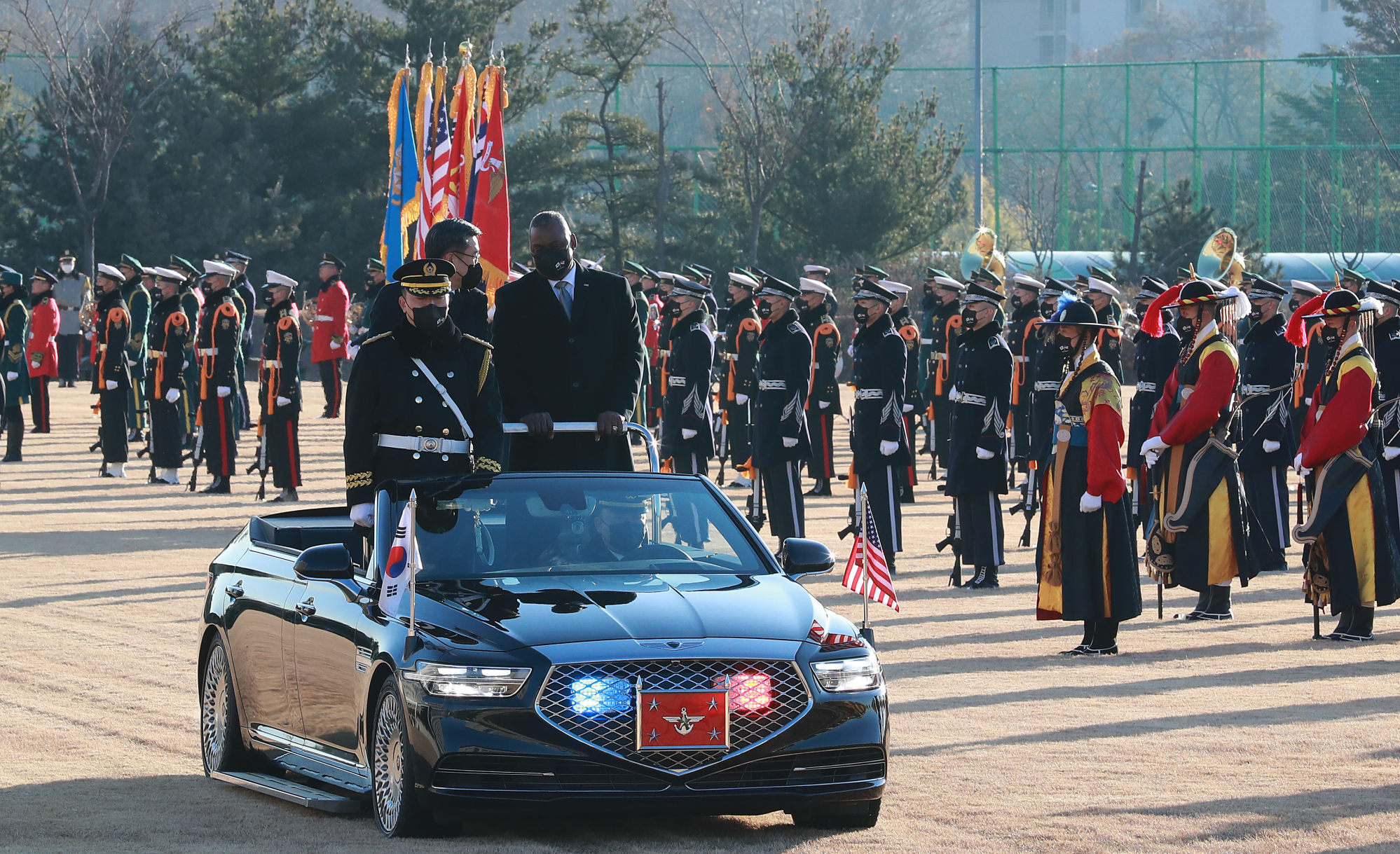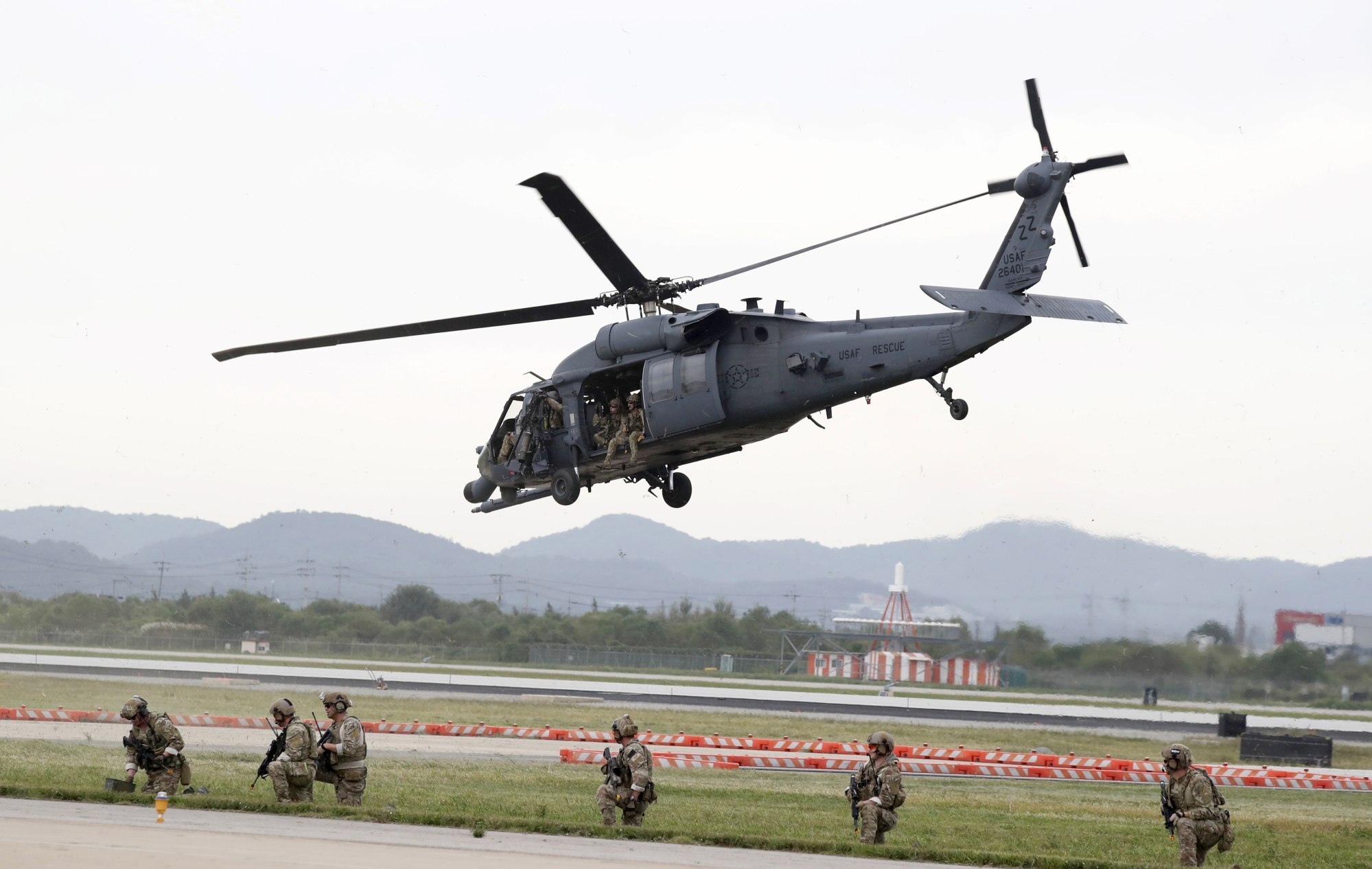
US accuses China of ‘increasing tensions’, hopes to resolve issues with Russia
- Washington will keep 28,500 troops stationed in South Korea as defence chief Lloyd Austin criticises China’s pursuit of hypersonic weapons
- The US has been keen to expand the role of its military in the South to address security threats from the North and from China, says an analyst
South Korean Defence Minister Suh Wook told reporters after talks with Austin that the US would maintain the current level of troops in the country, which stands at 28,500.

Lee Il-Woo, an analyst at the Korea Defence Network, an association of defence experts, said the US had been keen to expand the role of its troops stationed in the South to address security threats from the North and from China.
“Through the Security Consultative Meeting with the South Korean defence minister, the US side is believed to have sought to secure Seoul’s assent to its plan to extend the roles of US troops beyond the Korean peninsula to deter China,” Lee said. “US military authorities have already begun to change the commanding structures and composition of the US Forces in Korea in accordance with its plan to cope with China.”
The two Koreas are technically still at war nearly 70 years after the conflict, which ended in stalemate and an armistice signed by the US-led United Nations Command, China and North Korea.
The sun is setting on Moon’s hopes for inter-Korean peace
Beijing has backed Moon’s proposal for an end-of-war declaration, seeing it as an inducement for North Korea to engage in dialogue before his five-year term ends in the coming months.
South Korea’s National Security Adviser Suh Hoon will have talks with China’s top diplomat Yang Jiechi in the Chinese city of Tianjin on Thursday on North Korea, the presidential Blue House said.
Austin urged Pyongyang to return to diplomacy and said its missile and weapons developments were increasingly destabilising regional security.
In response to a question at a press briefing on China’s July hypersonic weapons test, the US Defence Secretary said: “We have concerns about the military capabilities that the PRC continues to pursue.
“Again, the pursuit of those capabilities increases tensions in the region. It just underscores why we consider the PRC to be our pacing challenge,” he said. “We’ll continue to maintain the capabilities to defend and deter against a range of potential threats from the PRC to ourselves and to our allies.”
There has been alarm in the US at reports that China in July and August carried out two tests of hypersonic weapons, which can travel at more than five times the speed of sound and at lower altitudes than conventional ballistic missiles. The Chinese foreign ministry denied the reports and said the operations were “routine test flights” aimed at recycling spacecraft to reduce exploration costs.

On Russia, Austin voiced hope that Washington and Moscow could work to “resolve issues and concerns and lower the temperature in the region”. Ukraine, a former Soviet republic that aspires to join the European Union and Nato, has become the main flashpoint between Russia and the West as relations have soured to their worst levels in the three decades since the Cold War ended.
Ukraine has accused Russia of deploying more than 90,000 troops near their long shared border but Moscow accuses Kyiv of pursuing its own military build-up, while defending its right to deploy troops on its own territory.
Asked whether fallout on Russia would be strictly economic, Austin declined to answer directly, saying only that the “best methods” would be used.
“Whatever we do will be done as a part of an international community,” he said, adding that the best case scenario would be for there to be no incursion by Russia into Ukraine.



